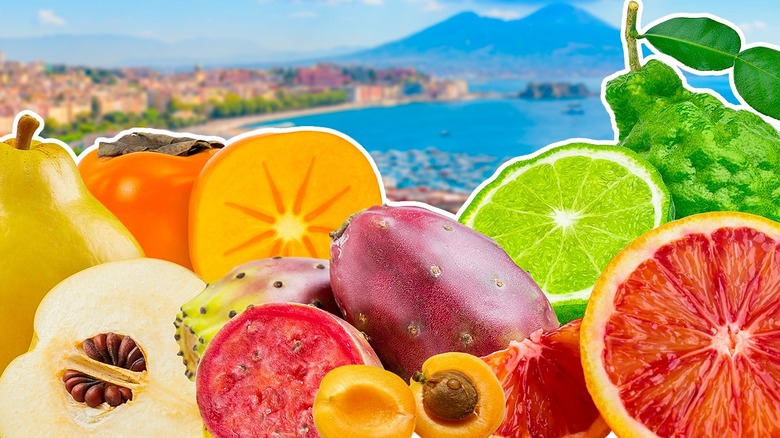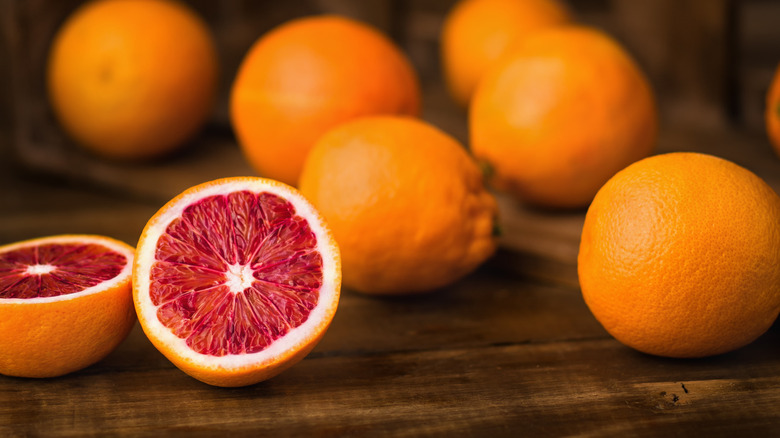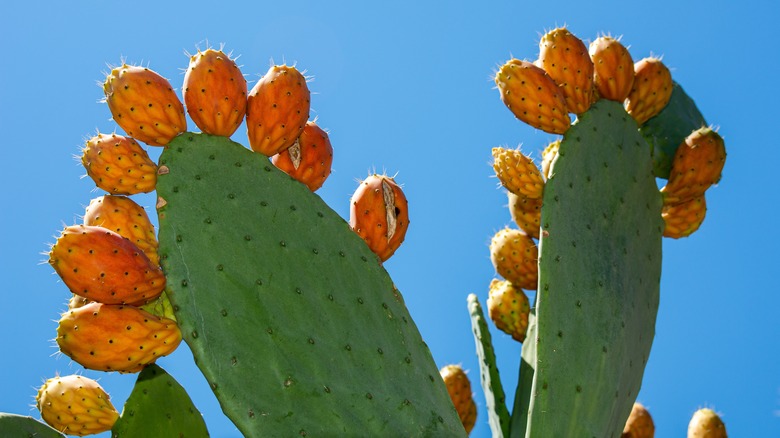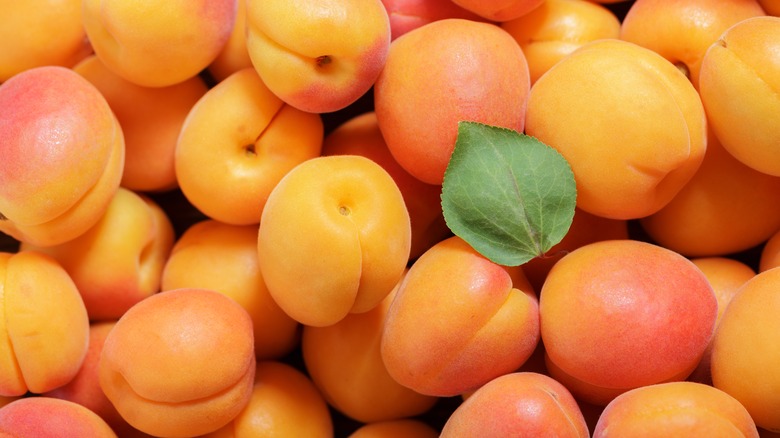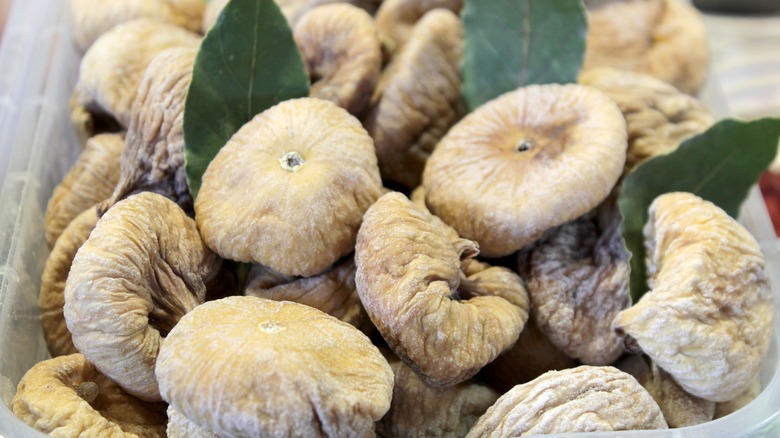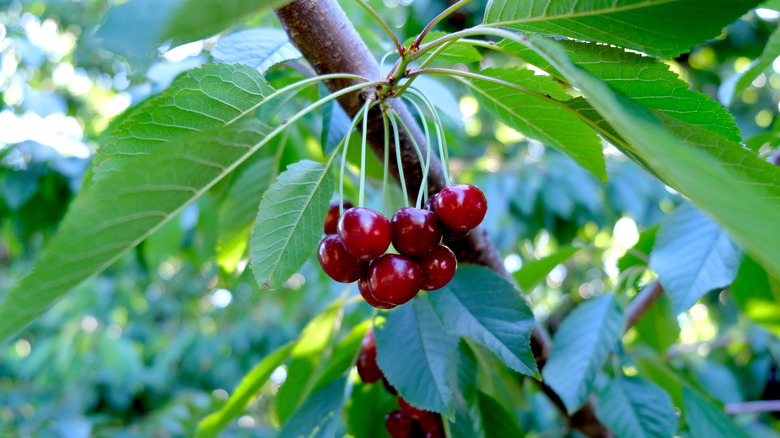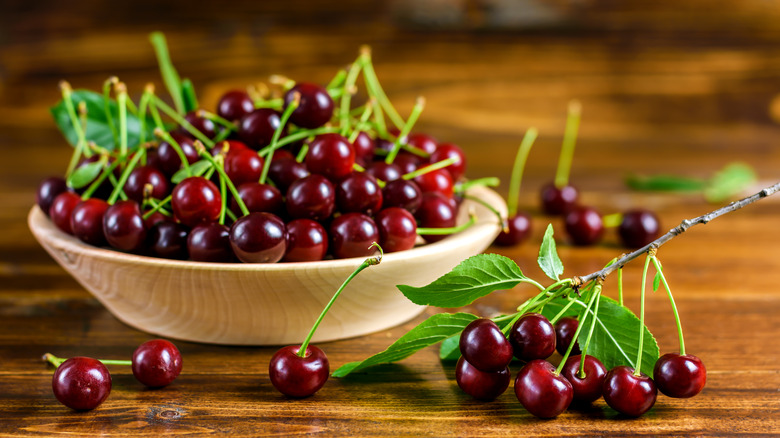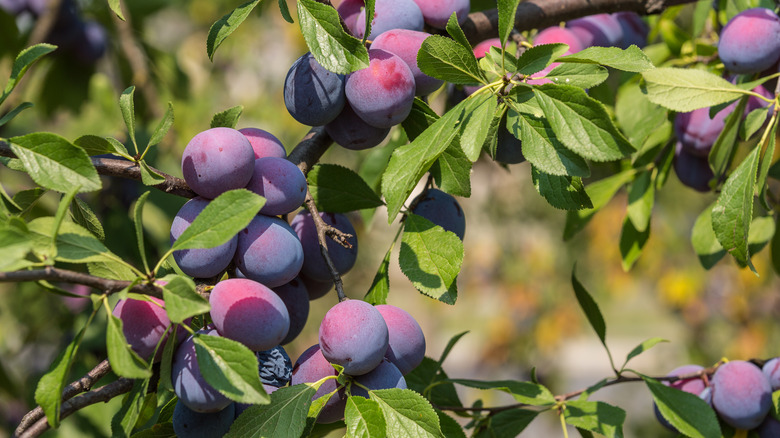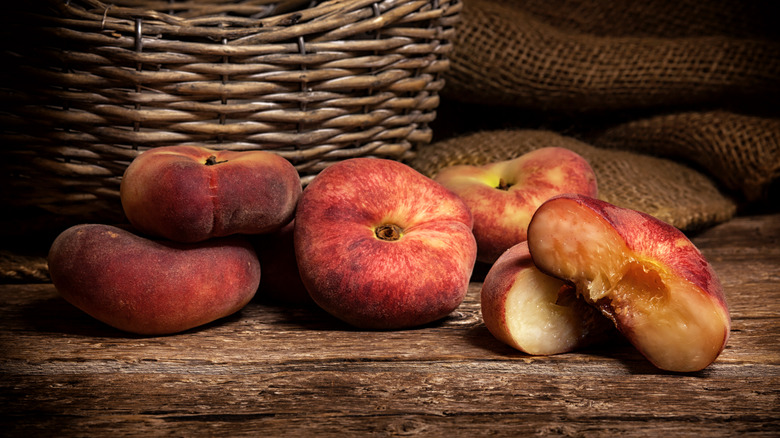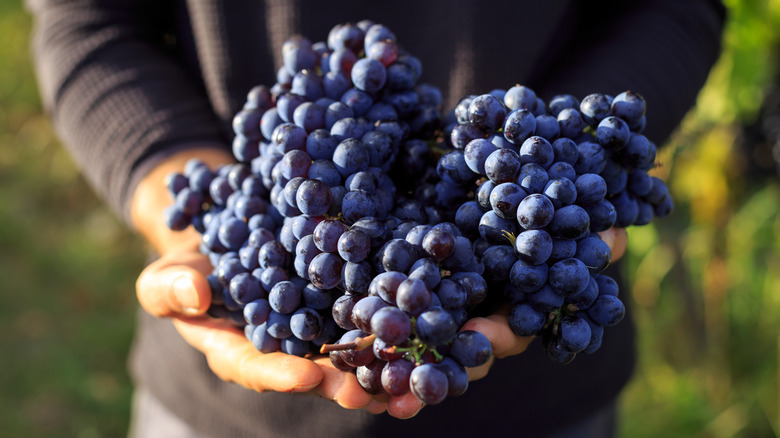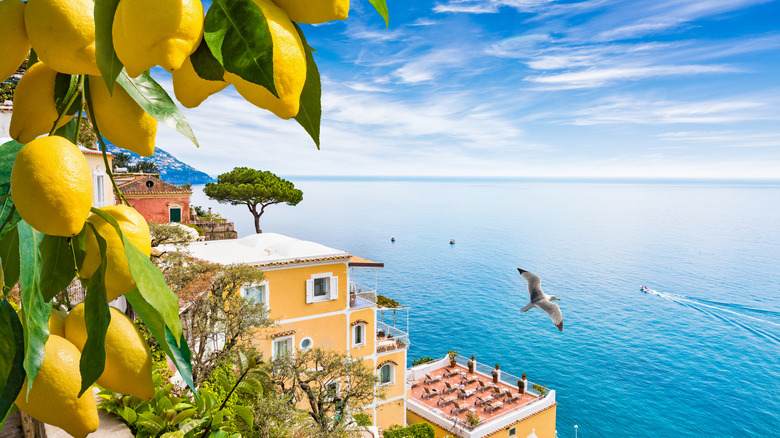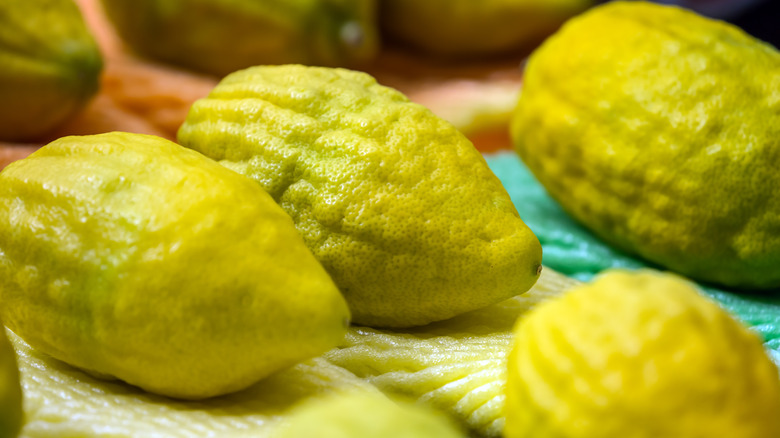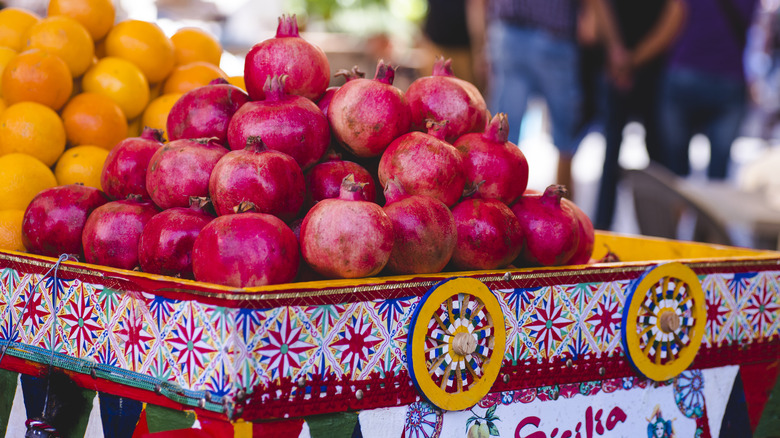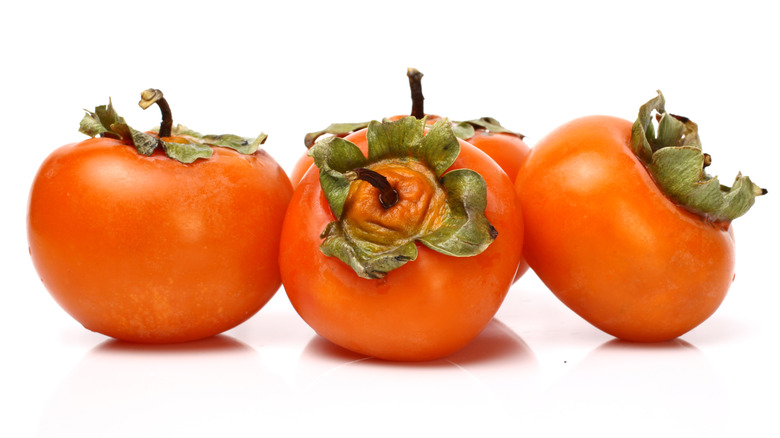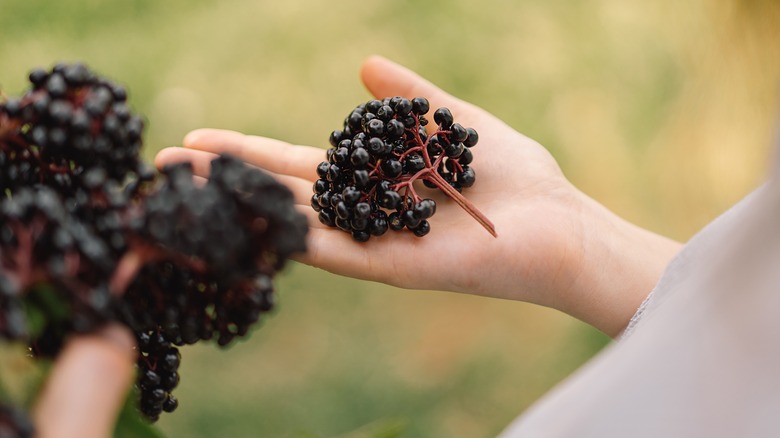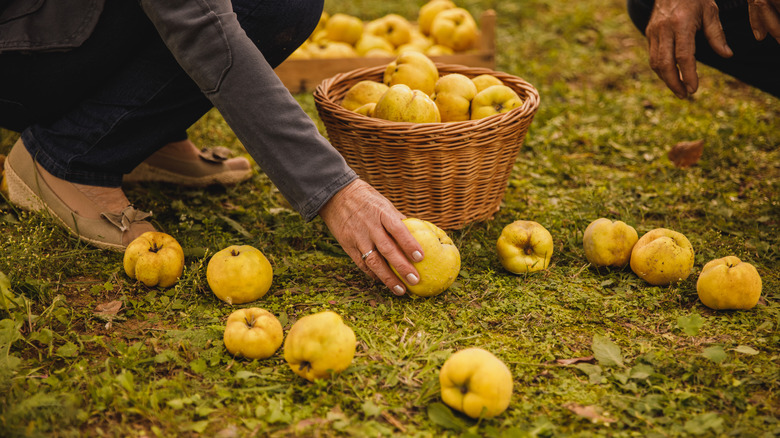Fresh Fruits You Need To Try When In Italy
Italy is famous for delicious pasta dishes, delectable pizza, exquisite gelato, and high-quality products such as olive oil, wine, and cheese. But some people may not know that the country is also renowned for the rich variety of fruits and vegetables that are cultivated locally. If you will be in Italy, don't miss the chance to taste some of the numerous fresh fruits when they're local and in season. To say you will be in for a treat is an understatement. This kind of Italian produce is full of delicious flavors and delightful aromas that are hard to find outside of their local element.
One of the best places to find fresh fruit in Italy is in the farmer's markets. Cities often have several markets in various locations that are open every day except Sunday, while smaller towns may have a market once a week. Try to find the stands set up by local farmers selling what they have in that particular season; they usually have fewer offerings that change frequently. Many delicious fruits that are grown in Italy are familiar to Americans. These include strawberries, blueberries, apples, pears, clementines, oranges, and peaches. Others may seem quite unfamiliar. They are all worth trying at least once.
Sicilian blood orange
Sicilian blood oranges, known as arancia rossa di Sicilia, look like regular oranges until they are opened to reveal dark red-orange flesh. These oranges grow in the fertile soil near the Mount Etna volcano in Sicily, a warm location that is subjected to temperature changes caused by the cold winds blowing over the mountain. When the oranges experience these changes in temperature, they become stressed and produce substances called anthocyanins as a defense mechanism, which are responsible for the dark red color of the flesh.
These oranges have a tarter flavor than regular oranges but are usually not too acidic to eat fresh. Those who prefer sweeter raw fruit can use blood oranges in desserts, preserves, and cocktails instead. Try serving a warm blood orange dessert with honey and rosemary, or pour a Costa Blanca gin and tonic over a blood orange round at the bottom of the glass.
Prickly pear cactus fruit
Southern Italy wouldn't look the same without prickly pear cactuses dotting the landscape. Fico d'India, as it is called, is flat and broad. Green stems are dotted with bright red, orange, yellow, and green fruits, and while they may not look that inviting, the oblong fruits have a pleasant flavor that is worth trying. The pulp is juicy but not that sweet, and many compare the taste to a cross between a lemon and a watermelon. To get to the fruit, first, you must remove the tough outer skin. If you're lucky, you can watch an Italian perform this operation entirely with a knife and fork without touching any part of the fruit at all.
The Italian name means "Indian fig," but this ancient plant actually originates from Central America and Mexico. The name resulted from Columbus mistakenly believing he had arrived in the Indies. The Spaniards brought the plant to Europe in the mid-1500s, where the ideal weather conditions allowed it to flourish across Italy.
Apricot
There's nothing quite like the flavor of a juicy Italian apricot when it's local and in season. Widely available in Italy, these fruits are enjoyed not only fresh but also dried and in jams, juices, and desserts. Apricots (albicocca) belong to the Rosaceae family, which includes peaches and cherries and are characterized by their small size, yellow-orange skin, sweet taste, and intense aroma.
Many varieties of apricot are grown in Italy. These include the royal apricot of Imola from near Bologna, the precocious apricot of Tuscany, and the Vesuvian apricot. The Valleggia apricot (albicocca di Valleggia), grown in northern Piemonte close to the Swiss border, stands above all the rest. Despite its unremarkable small size and the fact that it's only available when ripe during a three-week period between June and July, it's a gem if you can find it. This fruit is appreciated for its particularly intense flavor and aroma, which are not found so strongly in other varieties.
White fig
Just like Italian wine is classified as DOC or DOCG, other kinds of Italian foods can be certified as DOP. Cilento white figs are one of them. DOP stands for Denominazione di Origine Protetta (Protected Designation of Origin) and means that the product is locally grown and packed using traditional techniques by farmers and artisans from the area. These products have a higher price, but the certification also guarantees high quality.
The Cilento white fig (fico bianco del Cilento) is grown exclusively in the Cilento and Valle di Diano National Park, located in the Salerno province in the Campania region of Southern Italy. The DOP product refers to the dried version of fig. The name comes from the light yellow color of the peel once it has dried and the white color of the peeled version, although those are harder to find. They are also sold stuffed with nuts, fennel seeds, or citrus peels and may be dipped in rum or chocolate. Cilento white figs are especially popular at Christmastime.
Vignola cherry
According to St. Jerome, the cherry, which is native to many places the world over, arrived in Italy with Lucullus in 68 B.C. upon his return from the city of Cerasonte in Turkey. Italian monks in the Middle Ages kept the plants alive in their gardens. Today, Italy grows 150 different varieties of cherries. The Vignola cherry is a renowned variety from the region of Emilia Romagna that has achieved I.G.P certification (Protected Geographical Indication), which guarantees that the product is connected to a certain geographical location in Italy.
Vignola cherries are sweet and enjoyed raw but are also used to make jams, syrups, desserts, and liquors like cherry brandy. The sub-varieties have colors ranging from bright yellow or red to dark red and black. Vignola even has two separate cherry festivals each year in honor of this famous fruit, and the Vignola cherry has won the annual Cherries of Italy prize several times.
Sour black cherry
Amarena cherries, or sour black cherries, are small, dark fruits with a harder consistency than regular cherries and a sour, astringent taste. They are well known in Italy as part of a popular gelato flavor simply called amarena. The cherries contain oxalic acid, a compound also found in other fruits and vegetables like spinach, which is responsible for sourness. In fact, the word amarena comes from the Italian word amaro, which means bitter. They also have a subtle sweetness, and some people enjoy them raw, but they are not normally consumed fresh the way sweeter cherries are.
Instead, they are preserved in syrup, used in desserts like pies, cakes, granita, semifreddo, and made into fillings for chocolate. The Marasca, a variety of amarena cherry, is used to make maraschino, a popular cherry-flavored liqueur. Although not as well known as the uses in sweet dishes, amarena cherries are also found in savory recipes such as sauces served to accompany meats or even risotto.
Bergamot
The bergamot, or bergamotto, is a round citrus fruit that can come in yellowish, green, or orange shades. It originated in Asia, but the Italian region of Calabria is now grown as a hotspot for the fruit. Before you try to eat one raw, consider whether you can tolerate biting into a lemon because the bergamot is very bitter, and the experience will be similar. Rather than being consumed fresh, the bergamot is more commonly made into jams and juices. Bergamot peel is more widely used than the bitter flesh, as the fruit is grown and appreciated for its essential oil, which comes from pressing the skin. In fact, the province of Reggio Calabria is responsible for producing 90% of the bergamot oil in the world.
Historically, the Calabresi people recognized the benefits of this plant and started using it for ailments such as skin, respiratory, and digestive disorders as well as using it as a disinfectant. Today the oil is widely used in beauty products like perfumes (including Chanel No. 5), pharmaceutical products, malaria treatments, and insect repellent. It's even an important ingredient in Earl Gray tea, helping give it its distinctive flavor.
Dro plum
A small, oblong bluish-purple plum from the region of Trentino in Northern Italy, the Dro plum (susina di Dro) is the kind of fruit that many Americans refers to as an "Italian plum." Rather than the rounder common variety, the flesh of Dro plums is firmer and deliciously sweet with slightly sour notes. Unlike many Italian fruits which have Asian or Central or South American origins, the Dro plum is indigenous to the Sarca River valley in Trentino and grows in the mild climatic conditions created by nearby Lake Garda.
This fruit has been awarded the DOP certification, designating it as a special traditional local product. The Dro plum is enjoyed raw as well as used in traditional desserts such as prune-stuffed gnocchi, upside-down plum cake, plum crumble cake, and a very soft pudding-like cake called a plum clafoutis. It is also used in juices, jams, fermented beverages, liqueurs, ice cream, and in stuffings for meat.
Snuffbox peach
The snuffbox peach (pesca tabacchiera) is a curious-looking peach of small to medium size that looks like a regular peach that was somehow pressed and flattened. A rare variety, it was originally only grown on the slopes of Mount Etna in Southern Italy, but it's now cultivated in some parts of the North, too, most notably in the region of Emilia-Romagna. The name tabacchiera means tobacco tin or snuffbox and comes from the Italian word for tobacco. The peach's flattened shape is reminiscent of this receptacle.
The peach is also known by another colorful name, saturnina, which refers to the fruit's resemblance to the planet Saturn (which is Saturno in Italian). These peaches, available in the summer, are somewhat difficult to find in Italy, but if you are fortunate enough to discover some, you will be rewarded with delicious fruit with a strong, pleasant fruit aroma, soft white flesh, and a very sweet and refreshing flavor.
Strawberry grape
The strawberry grape has ancient North American origins and, unlike many Italian grapes grown for wine, is mainly cultivated for fresh fruit. This grape is well known for its very sweet flavor, and many say its fragrance is like that of strawberries. The aroma is, without a doubt, stronger than many other grape varieties, although whether it smells like strawberries is open to interpretation. Nevertheless, this association provided the name of strawberry grape, or uva fragola, in Italian.
These grapes are enjoyed fresh, in their dried form as raisins, and in jams, juices, and desserts. They are not used for winemaking in Italy. As it happens, in 1931, fragolino (a wine made from strawberry grapes) was banned in Italy and many other parts of the European Union. The reason? Italian authorities feared that this American variety of vine would eventually take the place of European vines, which have been deemed superior but less resistant to disease, climate change, and are more difficult to cultivate.
Etna lemon
Italians are proud of their lemons, and the lemons from the Mount Etna coast in Southern Italy are well known throughout the world, especially for their starring role in the Italian liqueur limoncello. Small lemon trees add beauty to southern Italian balconies and village groves, not to mention infusing the air with the delightful fragrance of lemon blossoms. There are two varieties of Etna lemons: Femminello, which includes those from the Amalfi Coast (Sorrento, Gargano, and Siracuse), and the Monachello cultivar.
Both kinds are harvested in spring, summer, and winter, but one type, the Sorrento lemon, is available year-round. This variety of Etna lemon began to be cultivated in the province of Naples during Renaissance times because it produces lemons five times a year. The unique Amalfi lemon is sweet enough to eat fresh and is said to have originated in the times of the Roman Empire. Amalfi lemons grow in beautiful hillside terraces, adding even more beauty to the Amalfi Coast, a UNESCO World Heritage Site that already looks like a postcard.
Citron
The citron, called cedro in Italian, looks like a peculiar and giant lemon and can grow to be up to a foot long. Besides the size, there are other notable differences between lemons and citrons. While lemons are always available in Italy, the citron only ripens between the end of October and January.
There are many varieties of lemon, but there are only four main varieties of citron, and they are principally grown in the region of Calabria, specifically on the Riviera dei Cedri, a coastal area in Cosenza. Citron skin usually has more bumps than the smoother lemon skin does, and if you open one, you'll see that the interior is comprised mostly of a thick rind and pith, with a small section of fleshy pulp in the center. Because of this, the rind or zest, which has an intensely bitter flavor, is the part of the fruit that is used the most, namely in candied fruit, liqueurs, and herbal teas.
Pomegranate
The ancient history of the pomegranate stretch back to Bronze Age Persia, and it has been present in Italy and the Mediterranean basin for thousands of years. While appreciated for its taste and health benefits, pomegranate (melograna) has always been a bit of an ungraceful fruit. It is difficult to remove the peel and extract the seeds without splashing juice on the kitchen and your clothes. The seeds can taste sour, and bits of rind usually stick to them. For these reasons, many Italians prefer to use it as an ornament or a Christmas decoration. However, despite almost going extinct in Italy, the fruit is now experiencing a resurgence thanks to action by fruit growers from Israel.
Peeling a pomegranate is worth the effort. It's considered a superfood full of vitamin C, potassium, phosphorus, iron, magnesium, and zinc. It also contains substances that counteract free radicals. Italians eat the seeds in yogurt and smoothies, add them to salads, top them over ice cream, and use them in dessert recipes.
Persimmon
Originally from Asia, the persimmon is a beautiful fruit that grows in Italy. Large trees fill with bright orange fruits when they come into season in the autumn. There are two varieties of persimmons in Italy. The first, called cachi, is only eaten when ripe because it contains tannins that give it an astringent taste before it ripens fully. The skin is stretched tight over ripe flesh that is extremely soft and sweet. The delicate fruits are sold and packaged carefully in containers that prevent them from moving.
To enjoy these sweet treats, Italians cut them in half and scoop out the soft, juicy flesh with a spoon. They are also used to make jams and liqueurs. Another variety called the cachi mela (which literally means apple persimmon), is similar to the regular persimmon, except the fruits are larger, lighter orange, and have a less rounded shape. The flesh is soft but much firmer than the first type, which means it can be cut into slices like an apple.
Loquats and Medlars
The Italian word nespola refers to two different fruits in Italian — loquats or medlars. The first variety is a small orange fruit resembling a pale apricot. It is sweet and can be consumed fresh even when not completely ripe. The second variety, the Mespilus germanica, is known as a medlar in English. This fruit is rounder and has distinctive outer whorls on one end. It must be eaten ripe because the immature fruits are very hard and bitter.
Loquats and medlars are not easily found in the United States, so they are worth trying if you can locate them. They are usually eaten as fresh seasonal fruit in Italy. They can also be made into a jam using a simple ratio of about two pounds of very ripe fruit and ¾ of a cup of honey. Loquats and medlars can also be baked in a crostata (an Italian fruit tart) or eaten with a cheese plate.
Elderberry
A wild Italian berry, the elderberry (sambuco) is characterized by a dark black color and a sweet taste. Elderberries can be eaten fresh or made into juice or preserves. The plant is also appreciated for its white, fragrant blossoms that appear in early spring. The flowers are usually steeped in hot water to make herbal tea. For the tea, use two teaspoons of dried flowers for every cup of boiling water, and let it steep for five minutes. In Italy, this tea is used to treat bronchitis, colds, fever, digestive problems, and even gout.
Besides culinary uses, the berries are used to dye fabrics, and the flowers are used to treat skin conditions such as pimples and sunburn. Many will notice that the word "sambuco" is similar to the name of the Italian anise liqueur Sambuca. In fact, the drink probably derives its name from the sambuco plant, but while some recipes call for sambuco flower extract, it's not always present.
Quince
The quince is an Italian autumnal fruit that comes from the same family as apples and pears. It is irregularly shaped and resembles a cross between an apple and a lemon or perhaps a yellowish pear. Curiously, it's possible that the quince is the source of the legendary golden apple from mythology. This fruit is most commonly grown in the southern Italian countryside in the regions of Campania, Sicily, Puglia, and Basilicata, but it can be found all over Italy.
The quince is not as common as many other Italian fruits and can be difficult to find. It is more likely to be found offered by small growers. The lack of popularity might be because it's not the most accessible of fruits. It must be cooked before eating because the raw flesh is sour and very hard. The cooked flesh, however, can be eaten alone or used to make quince jam and baked desserts.
